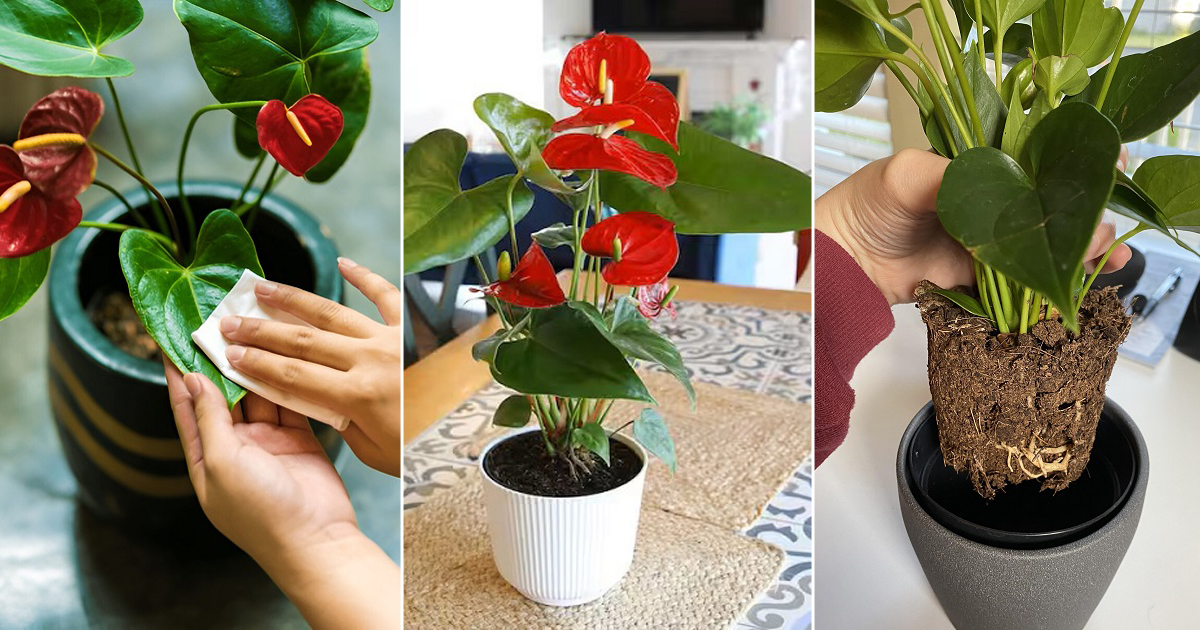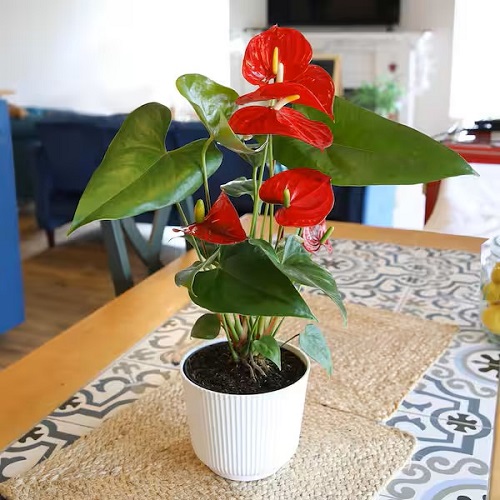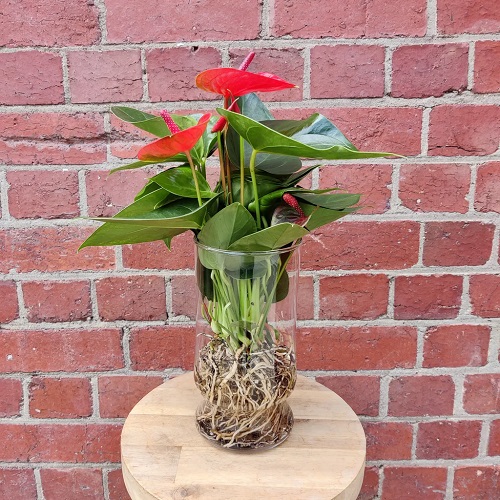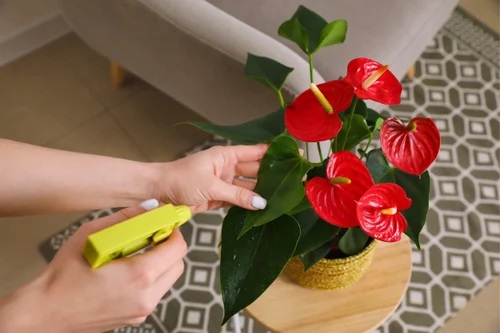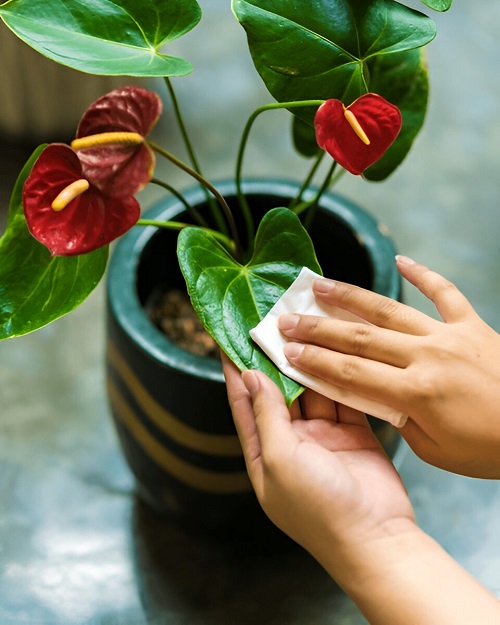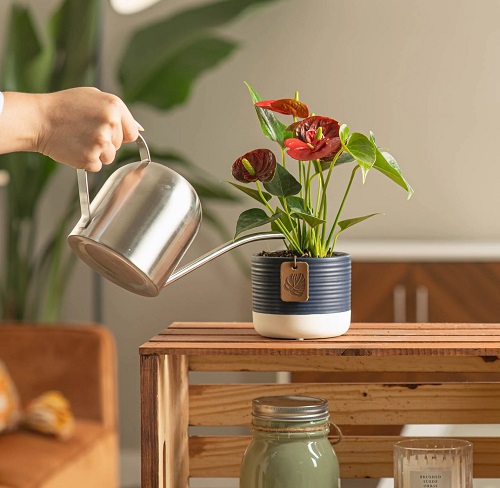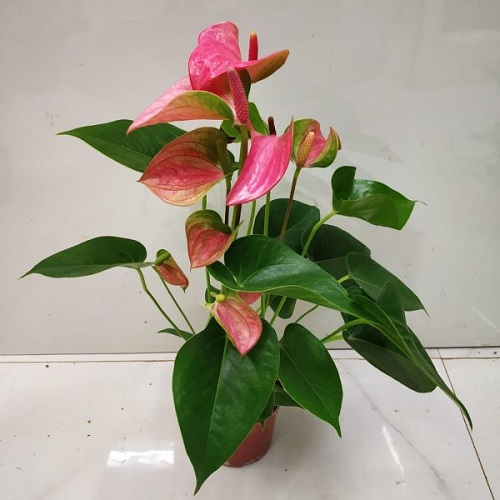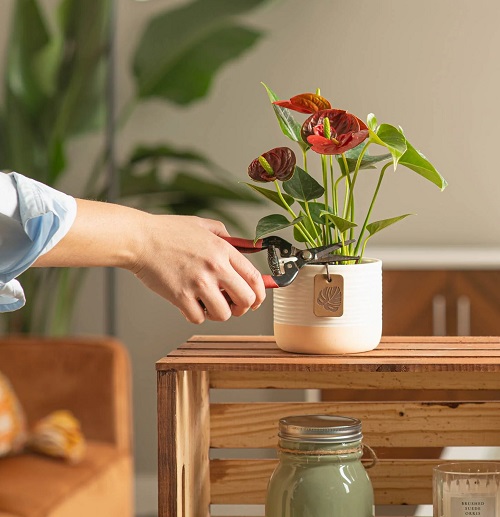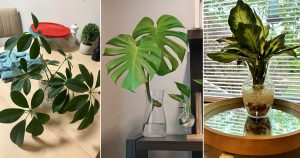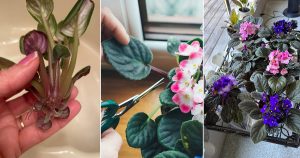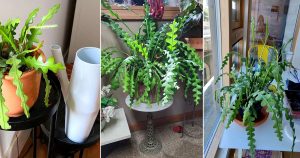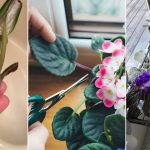Learn How to Grow Anthurium Indoors for continuous blooms and enjoy its beauty every season in your home with vibrant hues.
Anthurium, also called flamingo flowers, is loved for its bright red, green, and white colors. There are about 1,000 types of these perennial plants, which come from Central America, northern South America, and the Caribbean. While they grow well outdoors in tropical climates, most people keep them indoors or in greenhouses because they need special care.
Anthuriums can bloom again and again for long periods. They are easy to recognize by their shiny, heart-shaped spathes (a special leaf around the flower) and red or yellow spikes. They grow slowly to moderately, needing plenty of light, but can get sunburned if it’s too strong. Many types are natural climbers, and all need high humidity and warmth to stay healthy. Keep in mind, anthuriums are toxic to both people and pets.
Propagating Anthurium
You can grow new anthuriums from side shoots (pups) or stem cuttings, but side shoots are the quickest and easiest way. Growing them from seeds takes about four years before they flower, so it’s not the best choice for home gardeners.
To start, you’ll need a clean pot, fresh, well-draining soil, and a sharp, sterilized knife or pruners. For stem cuttings, you cut off the top of the main stem, but only if there is one or more new buds left on the main stem.
Here’s how to grow anthuriums using side shoots:
- Find a side shoot: Look for a healthy side shoot growing from the main stem. It should have at least one grown leaf and a few aerial roots that can be removed along with it.
- Cut it: Use a clean, sharp tool to cut the side shoot where it connects to the main stem. Make the cut straight and neat.
- Prepare the pot: Pick a pot that is wide and deep enough for the stem and roots. Fill it about one-third full with potting soil.
- Plant the cutting: Place the side shoot on the soil and cover the aerial roots with more soil, keeping any leaves or new buds above the surface.
- Care for it: Water well and keep the pot in a warm place with indirect light. You should see new growth in four to six weeks.
Types of Anthurium
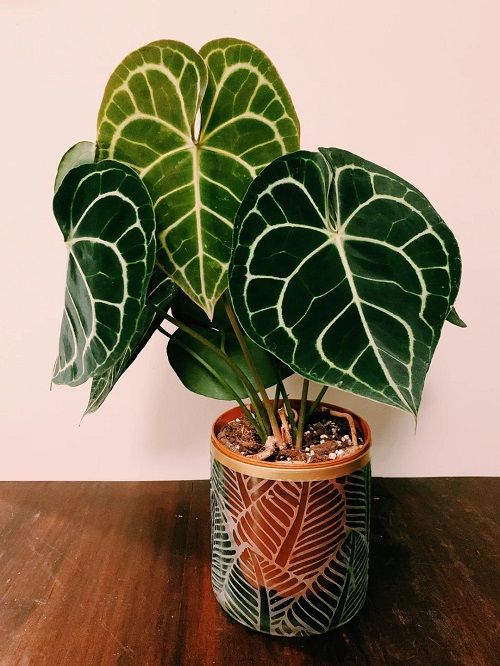
A. andreanum: A common type with heart-shaped leaves just over 1 foot long. Flowers can be red, white, pink, or mixed colors, and it has a straight flower spike.
A. scherzerianum: Another common type and the easiest to care for. It has arrow-shaped leaves and a curling orange flower spike.
A. crystallinum: A less common type with deep green, velvety leaves marked with bright white veins. The leaves can grow about 2 feet wide.
A. faustomirandae: A rare, giant plant with stiff, cardboard-like leaves that can grow over 5 feet. Usually grown only in greenhouses.
Requirements for Growing Anthuriums Indoors
Light
Anthuriums like sunlight more than shade, but too much direct sun can burn their leaves. If they don’t get enough light, they will grow poorly and produce fewer flowers. The best spot gives them about six hours of bright, indirect light each day.
Soil
Anthuriums need coarse, well-draining soil so air can flow around their roots. A good mix can be made with moss, coco coir, or half orchid mix and half regular houseplant soil. You can also mix sand and peat moss into orchid soil to make it coarse and fast-draining.
Water
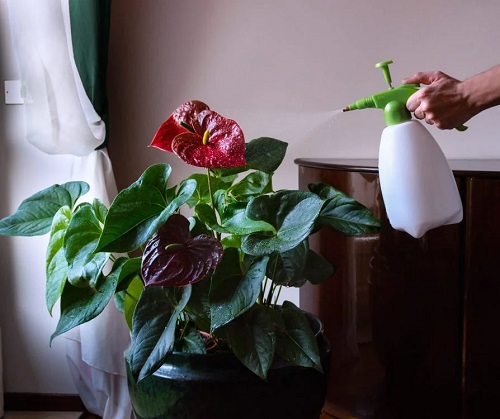
Keep the soil slightly moist and don’t let it dry out completely. For indoor plants, water about once a week or when the top feels dry. Water until it starts to drain from the holes at the bottom of the pot, but don’t let the plant sit in water, as anthuriums can get root rot.
If grown outdoors, they may need watering every two to three days.
Temperature and Humidity
All anthurium species come from tropical areas and like high humidity with temperatures between 65°F and 85°F. They can grow outdoors in zones 11 to 12. Temperatures below 60°F can harm them, and at 40°F, they will die.
In dry climates or during winter when the air is dry, place the plant on a pebble tray to keep humidity high. You may also need to run a humidifier all the time during these dry months.
Fertilizer
Use a liquid fertilizer high in phosphorus during the growing season. Dilute it to one-quarter strength and feed your plant every week. Fertilizer with lots of phosphorus helps anthuriums produce more flowers.
Dusting
Apart from watering, the main care your anthurium needs is regular dusting, as dust can block photosynthesis. Use a soft microfiber cloth to wipe the leaves gently.
Pruning
Remove old leaves and flowers as they fade. Pinch them off at the base or use clean, sharp pruners to cut them from the main stem. You can prune anytime to shape the plant, removing very tall stems or ones growing in odd directions.
Always keep at least three to four leaves on the plant. If a leaf is damaged, you can cut off only the bad part. If your plant has only a few leaves, it’s better to keep part of a damaged leaf until a new one grows.
Repotting

Repot your anthurium about every two years. Move it to a pot that’s no more than two inches wider than the old one. Plastic, ceramic, and terracotta pots all work well, but remember that terracotta dries out faster than plastic or ceramic.
To repot, fill the new pot about one-third full with soil. Place the plant on top, then gently add more soil around the base until it’s at the same depth as it was in the old pot.
Overwintering
Indoor anthuriums don’t need special care in winter. Since they get less light and grow more slowly, they can usually go longer between waterings.
Anthuriums can’t survive outdoors in non-tropical areas during winter. If your plant is outside, bring it in when the temperature drops below 60°F. Keep it near a sunny window with high humidity and a temperature around 75°F. A bathroom is an ideal spot.
Common Pests

Anthuriums can get the same pests as many other houseplants, including mealybugs, spider mites, whiteflies, and scale. Aphids can cause leaves to look distorted and spotty over time. Ants are often a sign of aphids because they feed on the sticky residue aphids leave behind.
Spider mites, thrips, and mealybugs attack new growth, causing yellow spots and mottled leaves. Tough pests can sometimes be treated with horticultural soap or oil sprays, which are natural and safe for the plant. You can also wash pests away with a strong spray of water. Just place the plant in the sink and rinse the leaves clean.
How to Get Anthurium to Bloom
Anthuriums can be a little fussy, but their stunning flowers make them worth the care. Indoors, if given the right conditions, they can bloom all year.
How Long Does Anthurium Bloom?
Each flower can last for two to three months.
What Do Anthurium Flowers Look and Smell Like?
Anthurium “flowers” are actually modified leaves called spathes. They grow on single spikes from the main stem, with a pencil-shaped center that holds tiny white, red, or yellow flowers.
Most houseplant varieties have red spathes, but they can also be white, pink, purple, or multi-colored. They are heart-shaped, shiny, and sometimes slightly crinkled.
Some anthuriums smell sweet or fruity, while others have an unpleasant scent.
How to Keep Anthurium Blooming
Most anthuriums are sold already in bloom. To keep them flowering, you need to give them the same perfect care they had in the greenhouse—bright light, high humidity, and regular feeding. If they’re not in a bathroom window, use a humidifier. Feed weekly with a diluted liquid fertilizer high in phosphorus.
If flowers still don’t appear, give the plant more light and check that it isn’t rootbound and ready for repotting.
Deadheading Anthurium Flowers
Let flowers stay on the plant until they start to turn brown. Then, use a clean, sharp tool to cut off the entire spike where it meets the main stem.
Note: Your anthurium will only bloom indoors if it gets perfect care. To give it what it needs, you can use a humidifier and a grow light.

